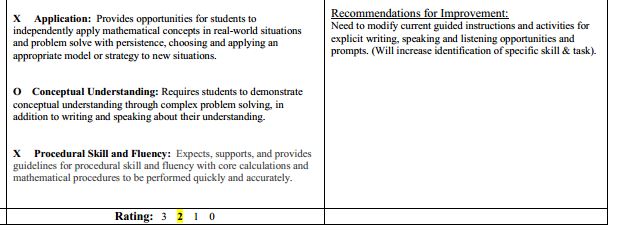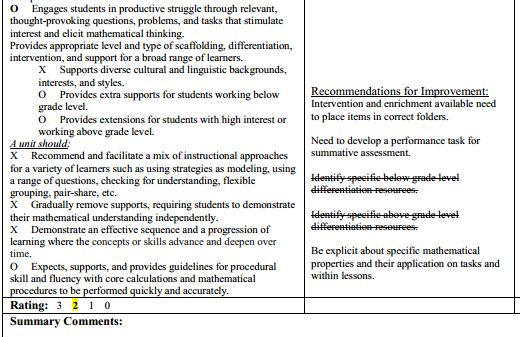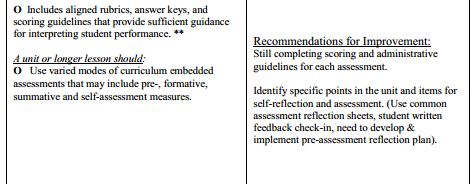Every time our math committee meets we are energized by the progress we’ve made but at the same time we feel deflated because there is so much more work ahead of us. Last week we were again reminded that our math units need bolstering.
On Wedesday we once again analyzed our progress using the Tri-state EQuIP Rubric designed by Achieve. For the 7th grade rational numbers unit there are four areas we need work on:
Linking Mathematical Practices to learning opportunities and assessment items.
We hadn’t formally identified the applicable MPs to each learning sheet and activity so we went back and did that. Examining our assessments was next. My colleague and I experienced a giant YIKES on the decimals assessment because hardly any items could be linked to a MP. Since we ran out of time we need to revise those items plus look at the other assessments in the unit.
Explicit writing, speaking, and listening opportunities
We made some progress here by modifying directions on some activities. For example our subtracting integers portfolio was modified to include two peer reviews. The next time I assign this task students will create a draft of their video using Explain Everything then two students will watch, listen, and provide written feedback before creating the final video.
Instructional supports
We have some intervention and enrichment resources but we need find more and better organize the ones we currently have. The rubric also identifies the need for a performance task for the unit. I think we inadvertently listed it in the instructional supports section.
Scoring rubrics and pre-assessment reflection plans
Formally identifying the characteristics of partial credit, high partial credit, and full credit are on the drawing board. We also need to create a pre-assessment reflection plan for students to identify their strengths and what they need to review. This also includes helping them design an action plan before they take the assessment.
Lots of work ahead.







